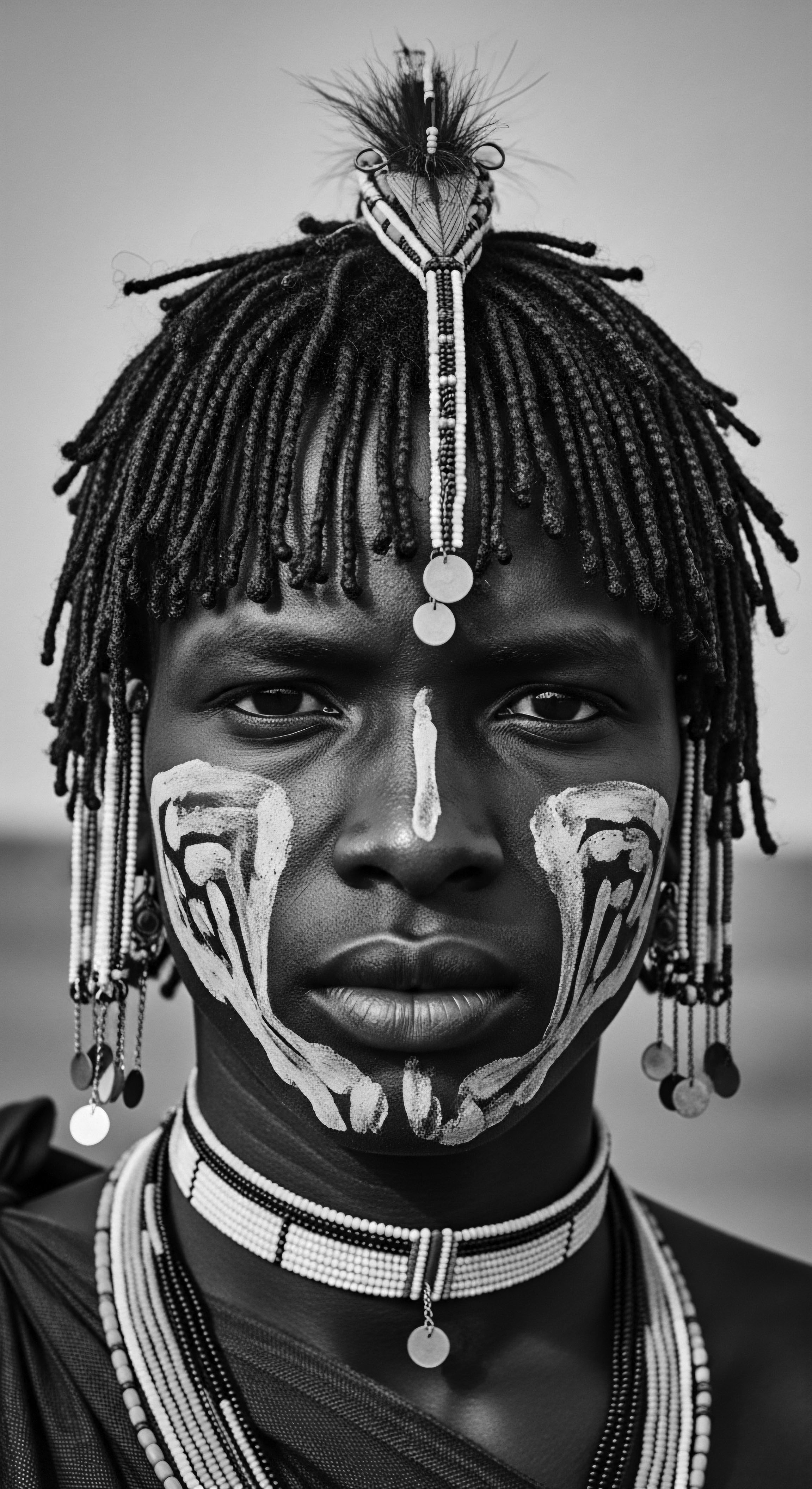
Roots
To truly comprehend the profound journey of textured hair, one must first listen for the echoes from the source—the ancestral lands where every coil, every strand, holds a whispered story of belonging. This is not merely an academic exercise; it is an invitation to reconnect with the very fibers of identity, to understand how traditional hairstyles were never simply superficial adornments. They were, in fact, vibrant manifestations of a living heritage, a profound language etched into the very helix of African existence, stretching back millennia. To speak of African hair, especially its rich, varied textures, is to speak of the earth itself, of community, of spirit, and of an enduring legacy that refuses to be silenced by time or distance.

What Does Textured Hair Reveal About Its Ancestral Origins?
The biological architecture of textured hair itself bears witness to the environments from which it emerged. Its unique curl patterns—from broad, gentle waves to tightly coiled, dense spirals—offer inherent protection from the sun’s harsh rays and the arid winds of the continent. This natural design served as an elemental shield, maintaining moisture and guarding the scalp, a physiological testament to generations of adaptation.
Such intrinsic characteristics laid the groundwork for styling practices that celebrated and enhanced these protective qualities, long before the advent of modern hair science. The very structure of each strand became a canvas for cultural expression, a reflection of environmental wisdom passed down through generations.
Before colonial impositions attempted to sever these connections, hair in African societies was a direct communicator. Its styling signaled everything from one’s age, marital status, and social standing to their tribal affiliation and spiritual convictions. The head was often considered the most elevated part of the body, a conduit for divine communication and personal power.
Therefore, the care and adornment of hair were not casual acts; they were rituals steeped in meaning, often performed by trusted hands, reinforcing communal bonds and a collective understanding of self. In ancient Egyptian society, for instance, elaborate wigs and intricate braids served as clear markers of hierarchy and religious devotion, adorned with precious materials to symbolize wealth and a direct connection to the gods.
Traditional African hairstyles were not mere decorations; they were living archives of heritage, conveying complex messages about identity, status, and spiritual connection.

How Did Hair Anatomy Influence Ancient African Hair Practices?
The inherent characteristics of textured hair—its elasticity, its tendency to resist breakage when properly cared for, its natural volume—informed the earliest care practices. Unlike straighter hair types, coiled strands, when wet, tend to clump and shrink, making manipulation without proper lubrication a challenge. Ancient African communities understood this intimately, developing meticulous routines involving natural oils, butters, and plant-based cleansers. These ancestral practices were not accidental; they represented an intuitive, empirical understanding of hair biology, long before microscopes revealed follicular structures.
This foundational knowledge allowed for the creation of styles that protected the delicate nature of textured hair while simultaneously broadcasting social information. The strength of braided or twisted styles, for example, offered a shield against environmental elements and daily wear, allowing hair to grow undisturbed. This protective aspect was not just about preservation; it was about honoring the hair’s natural inclinations, working with its inherent strengths rather than against them.
- Melanin Distribution ❉ The presence of eumelanin, which gives darker hues, also contributes to the tensile strength of textured hair, influencing its resilience to breakage.
- Follicle Shape ❉ The elliptical or flattened shape of the hair follicle produces the distinctive coils and curls, making styles like braids and twists a natural fit for retention and patterning.
- Natural Lubrication ❉ The scalp’s sebaceous glands produce sebum, which travels slower down coiled strands; ancestral practices often augmented this with external emollients like shea butter or palm oil to keep the hair supple.
Consider the Himba people of Namibia. Their distinctive hairstyles, coated with a mixture of red ochre paste and butter, symbolize a deep connection to the earth and mark various life stages. Young girls wear small braided sections, while married women sport larger, more elaborate styles signifying maturity and fertility. This practice, known as Otjize, encapsulates the symbiotic relationship between cultural expression, environmental adaptation, and the unique properties of textured hair.
| Community/Region Yoruba (Nigeria) |
| Hairstyle Example Irun Kiko (thread-wrapped styles), elaborate braids |
| Societal Message/Significance to Heritage Indicated femininity, marriage, or coming-of-age rites; served as spiritual conduits to deities. |
| Community/Region Himba (Namibia) |
| Hairstyle Example Ochre-coated dreadlocks (Otjize) |
| Societal Message/Significance to Heritage Reflected age, life stage, marital status, and a deep connection to the earth and ancestors. |
| Community/Region Wolof (Senegal/The Gambia) |
| Hairstyle Example Partially shaved heads for young women; braided styles for men at war |
| Societal Message/Significance to Heritage Communicated marital availability (for women) or readiness for conflict (for men); a visual language of status. |
| Community/Region Ancient Egypt |
| Hairstyle Example Wigs, intricate braids, side-locks |
| Societal Message/Significance to Heritage Symbolized social status, wealth, religious devotion, and divine connection; side-locks denoted youth and innocence. |
| Community/Region These varied traditions illuminate how hair served as a dynamic, visible script of African heritage, deeply rooted in community life and spiritual belief. |
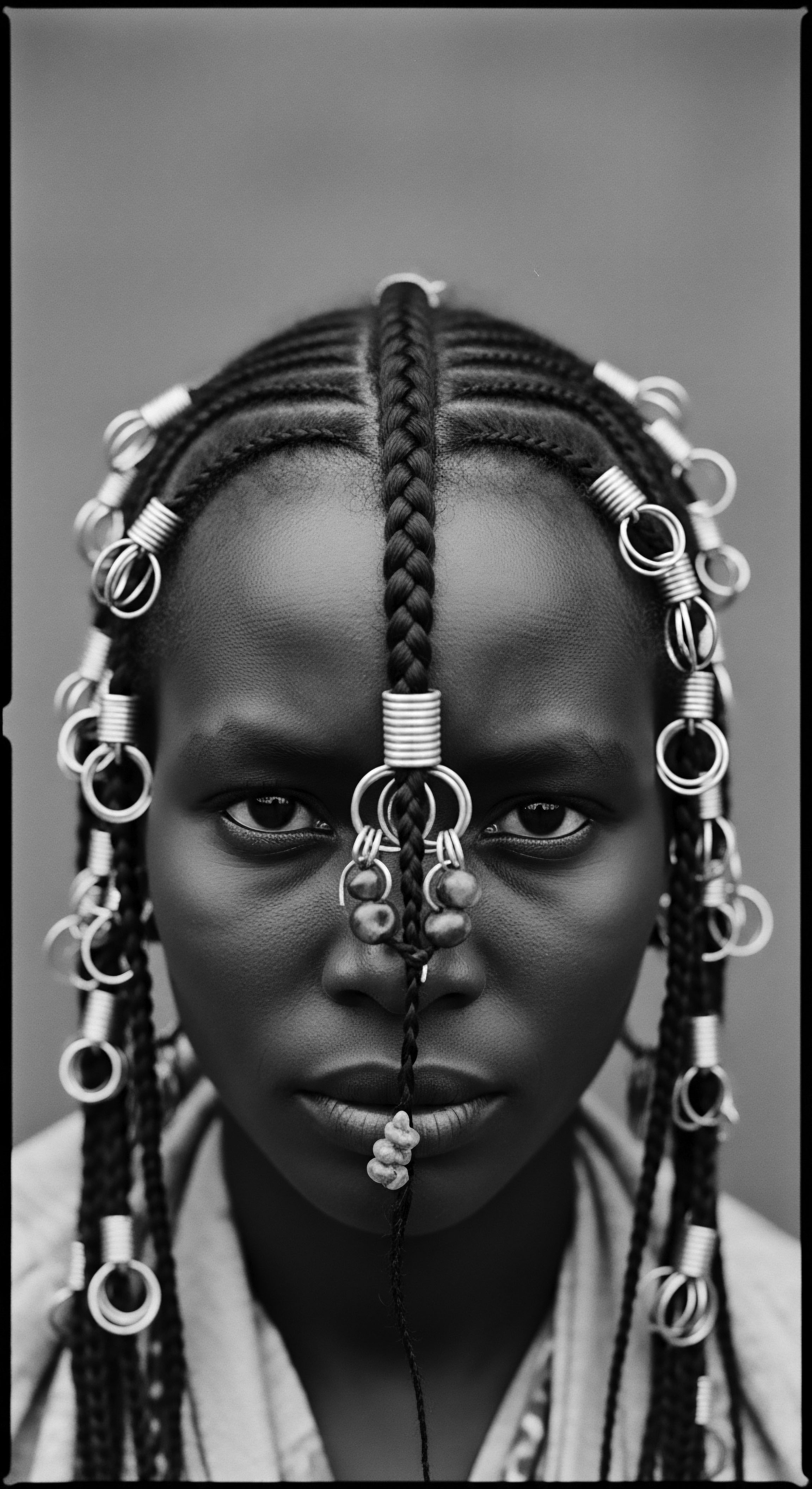
Ritual
The very heart of how traditional hairstyles reflected African heritage lies in the profound ritual of care, the tender threads of communal practice that transcended mere aesthetics. These were not solitary acts before a looking glass; they were moments of deep connection, of knowledge transfer, and of spiritual alignment. The processes themselves—washing, oiling, braiding, twisting, adorning—were imbued with significance, transforming hair care into an intimate communal affair. This sustained engagement with hair fostered an ancestral wisdom regarding its unique needs, allowing for the practical evolution of techniques and tools that served, protected, and celebrated textured hair.

How Were Hair Care Rituals Linked to Social Cohesion and Ancestral Practices?
Consider the hours, often days, that went into creating and maintaining these elaborate styles. This extended duration was not a burden but an opportunity for interaction. Grandmothers shared ancient stories, mothers imparted life lessons, and sisters exchanged whispered confidences. Hairdressing became a cherished social activity, particularly among women, strengthening familial bonds and community ties.
The very act of hands moving through hair, the shared laughter, the quiet moments of reflection, solidified a collective identity. This tradition of communal hair care, passed down across generations, remains a powerful link to ancestral practices even today.
The tools themselves were extensions of this ancestral wisdom. Combs carved from wood or bone, intricately designed to navigate coils without causing breakage, were not simply utilitarian objects; they were cultural artifacts. Adornments—cowrie shells, beads, feathers, gold, or silver coins—were not arbitrary embellishments. Each carried specific cultural symbolism, often signifying wealth, marital status, tribal affiliation, or even protection against malevolent forces.
In West Africa, for example, cowrie shells frequently embellished Fulani braids, conveying historical significance and beauty. These elements transformed hairstyles into living canvases, capable of telling complex stories without a single uttered word.
The practice of hair styling was a sacred communal ritual, weaving together personal identity, social bonds, and profound ancestral knowledge.

Did Traditional Hair Practices Serve as a Form of Silent Communication?
Beyond social status, traditional hairstyles functioned as a sophisticated visual language. An individual’s hair could communicate their readiness for marriage, a period of mourning, or even a warrior’s status. In Sudan, young girls wore Mushat Plaits, symbolizing sentimental time spent with matriarchs, while brides underwent multi-day braid-a-thons as a ceremonial practice before matrimony. The direction of cornrows could signify one’s lineage, or even serve as a covert map for escape during periods of oppression, as seen during the transatlantic slave trade.
This non-verbal communication extended to spiritual beliefs. Hair, being the highest point of the body, was often regarded as a conduit for spiritual energy and a connection to the divine. The Yoruba people of Nigeria, for instance, believed that braided hair could be used to send messages to the gods.
This spiritual dimension meant that hair care was not just about physical appearance but about maintaining spiritual hygiene and connection. The meticulous nature of the process, the choice of adornments, and the specific style all contributed to a powerful form of spiritual expression.
- Bantu Knots ❉ Originating from the Bantu people of Southern Africa, these coiled knots symbolize pride and are often worn during rites of passage, reflecting spiritual elevation.
- Cornrows ❉ These intricate braided styles, found as far back as 3000 BC, were used to signify marital status, age, social class, and even tribal identity among groups like the Fulani and Yoruba. They also famously served as discreet communication during the slave trade.
- Dreadlocks ❉ With roots dating back to 500 BCE, dreadlocks in communities like the Maasai held deep spiritual meanings, often associated with warrior status and religious devotion, connecting wearers to the divine.
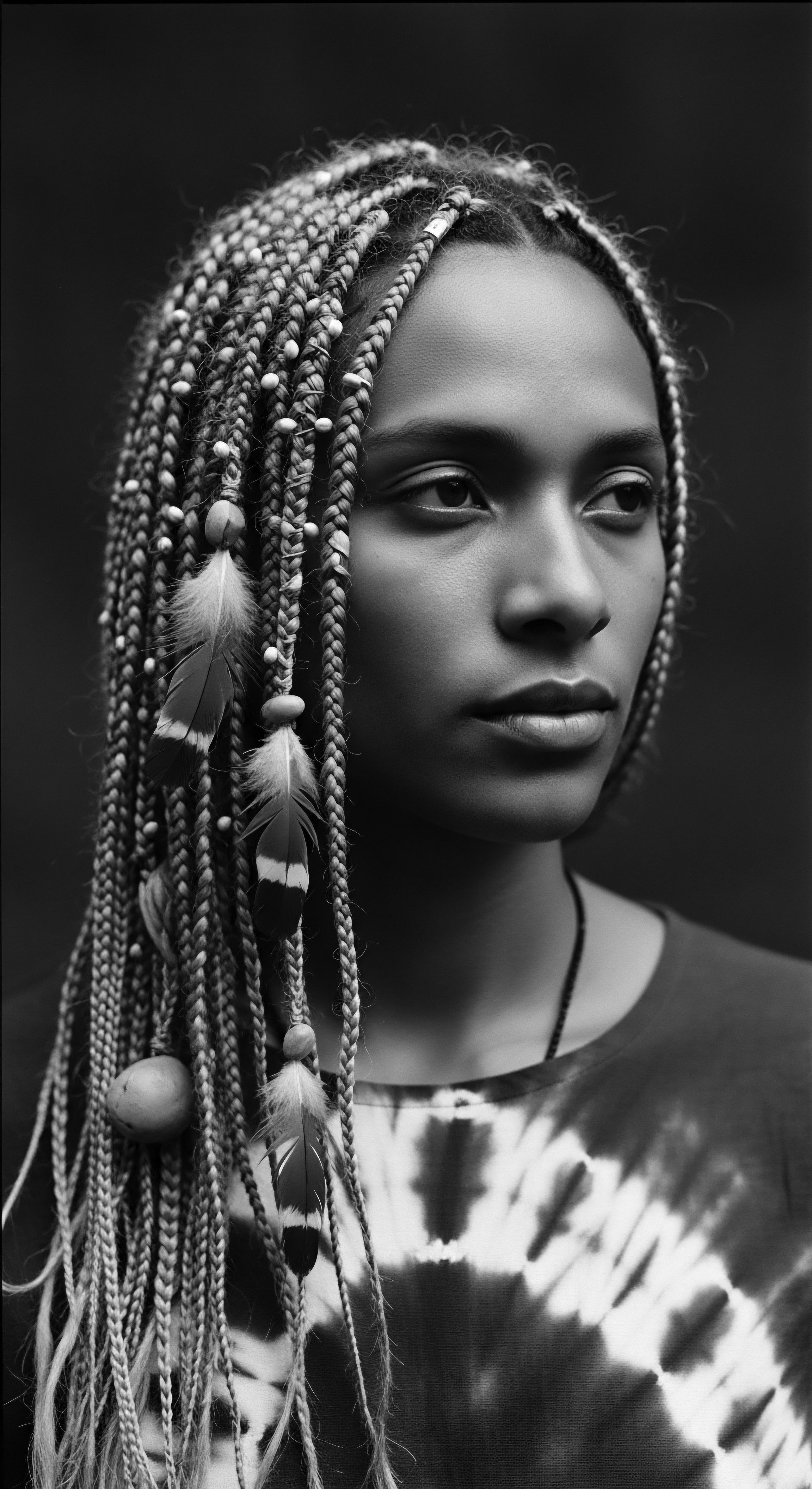
Relay
The heritage of textured hair, as expressed through traditional African hairstyles, is a living legacy that has relentlessly adapted, persisted, and inspired across generations, even in the face of profound adversity. The journey from ancestral practices to contemporary expressions reveals a resilient spirit, where hair becomes a powerful voice—a boundless helix of identity and continuity. This section delves into the intricate interplay of historical resilience, cultural reclamation, and the ongoing scientific validation that underscores the enduring significance of these practices.
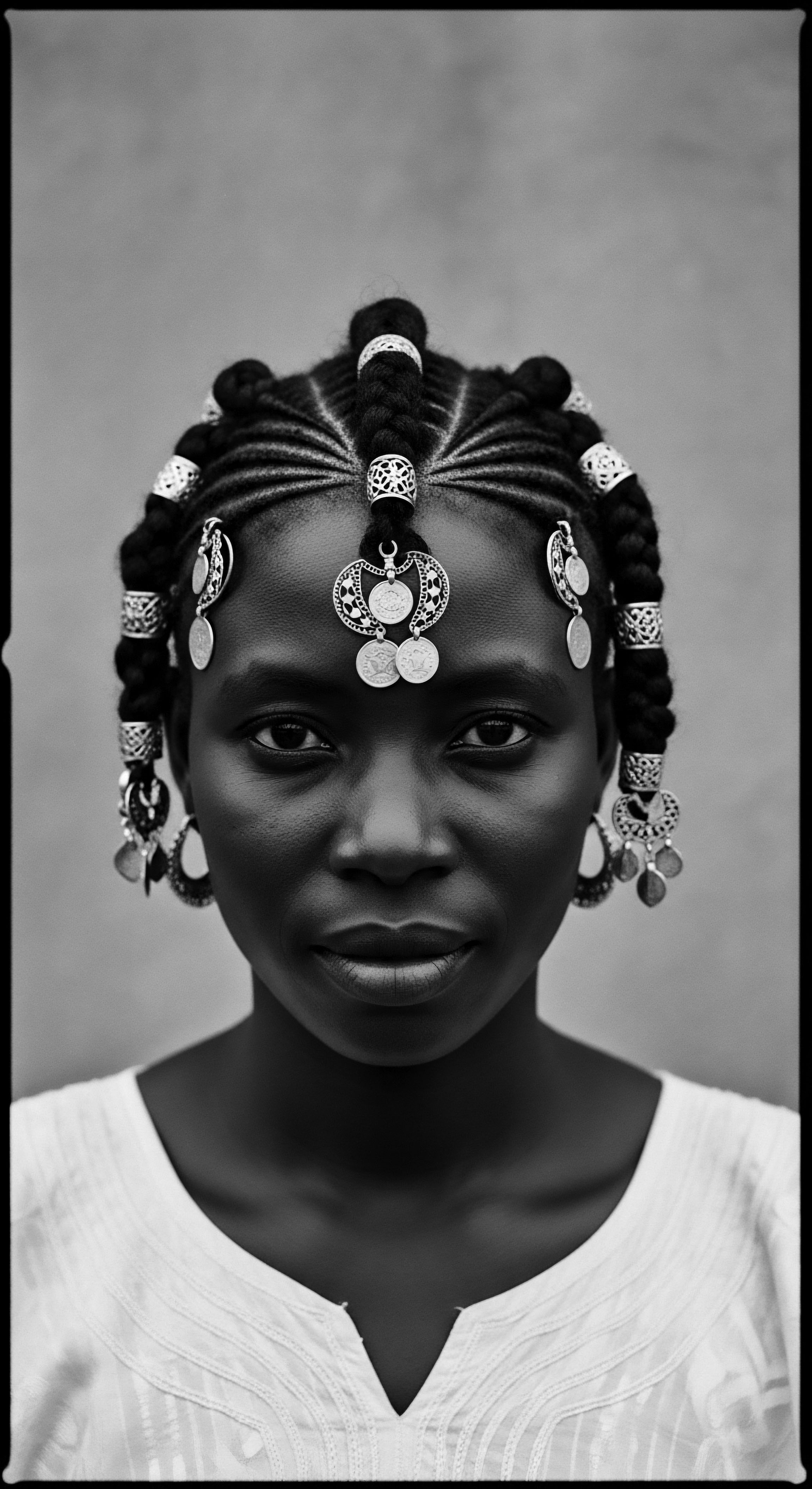
How Did Hair Become a Symbol of Resistance Through the Transatlantic Slave Trade?
The transatlantic slave trade marked a deliberate attempt to dismantle African identities, and a primary tactic involved the forced shaving of enslaved individuals’ heads. This act aimed to strip them of their cultural markers and reduce them to mere commodities. Yet, despite this brutal dehumanization, African people clung to their hair as a silent, potent expression of identity and a steadfast connection to their homeland. Hair became an invaluable source of cultural preservation, a reminder of self-worth, and a conduit for maintaining their essence.
Stories abound of ingenious uses of hair during this period. Some enslaved African women, particularly those with knowledge of rice farming, braided rice seeds into their hair before being transported to the Americas, ensuring the survival of staple crops and a piece of their agricultural heritage. Cornrows, beyond their aesthetic function, served as covert maps, their intricate patterns encoding routes to freedom, passed discreetly from one individual to another. This transformation of hair into a tool of survival and rebellion underscores its profound cultural weight and the unwavering spirit of those who wore it.
| Historical Context Transatlantic Slave Trade |
| Hair Practice/Symbolism Shaving of heads by enslavers |
| Significance to Heritage and Resilience Deliberate act of identity erasure; yet, resilience maintained through subtle traditional styles. |
| Historical Context Plantation Life (Americas) |
| Hair Practice/Symbolism Braiding rice seeds into hair; cornrows as escape maps |
| Significance to Heritage and Resilience Survival mechanism, preservation of agricultural heritage, covert communication, and resistance. |
| Historical Context 18th Century Laws (e.g. Louisiana Tignon Laws) |
| Hair Practice/Symbolism Forced head coverings for Black women |
| Significance to Heritage and Resilience Attempt to enforce social hierarchy; led to headwraps becoming symbols of dignity and cultural pride. |
| Historical Context Civil Rights Movement (1960s-1970s) |
| Hair Practice/Symbolism The Afro hairstyle |
| Significance to Heritage and Resilience Powerful political statement of Black pride, resistance against discrimination, and a return to African roots. |
| Historical Context These instances reveal how hair, under duress, became a profound symbol of heritage, a defiant act of self-assertion, and an enduring link to cultural lineage. |
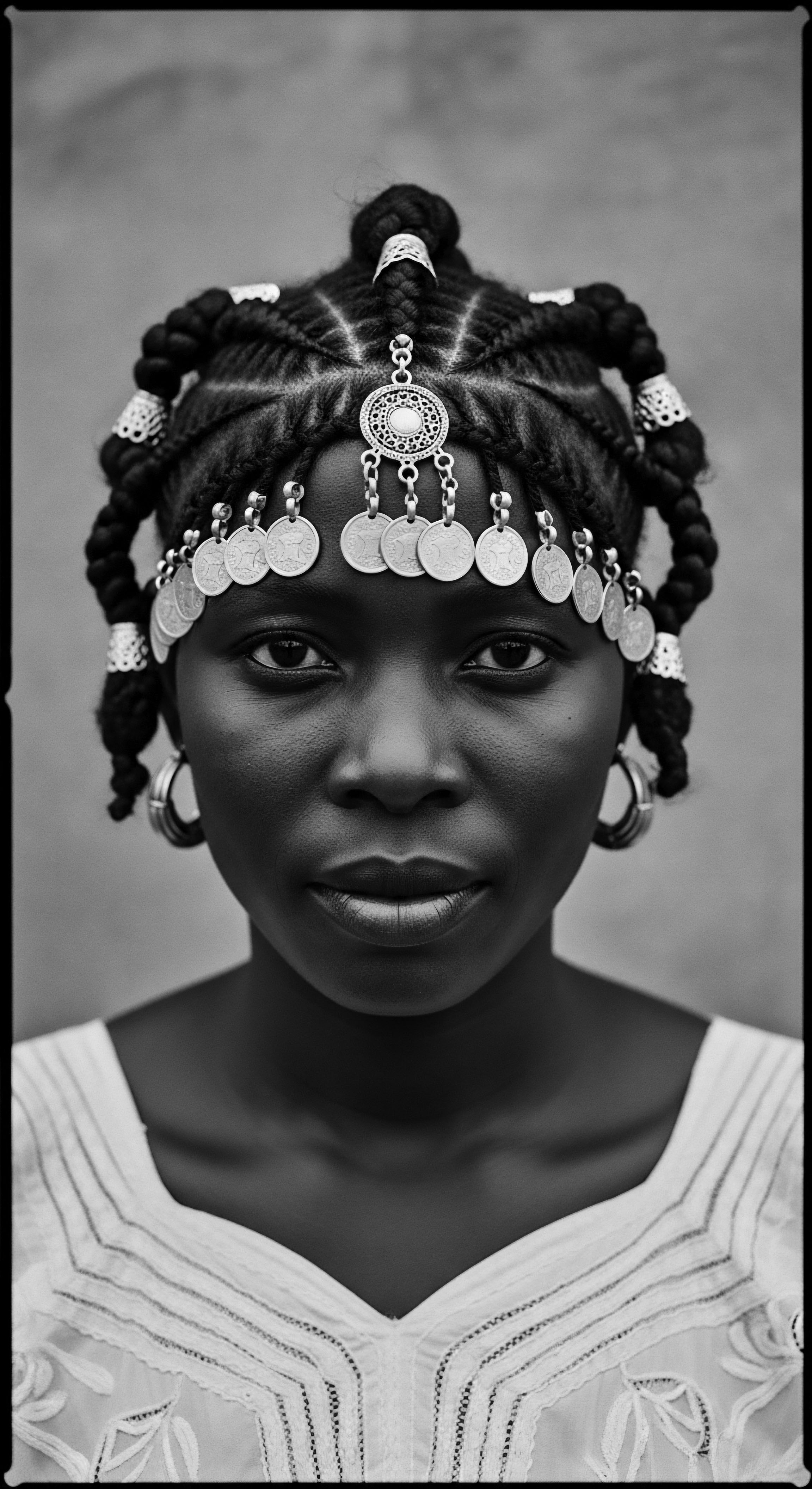
How Does Modern Science Validate Ancestral Hair Care Wisdom?
The wisdom embedded in traditional African hair care practices, once dismissed or misunderstood by Eurocentric beauty standards, increasingly finds validation in contemporary scientific understanding. The protective styles—braids, twists, locs—reduce manipulation, minimize breakage, and allow hair to thrive, principles now widely acknowledged in modern haircare for textured hair. This deep-rooted knowledge of hair’s delicate nature, passed down orally and through practice, predates formalized scientific study yet aligns remarkably with its findings.
Consider the consistent use of natural oils and butters in traditional African hair regimens. Ingredients like Shea Butter, Palm Oil, and various herbal infusions provided essential moisture, sealed the hair cuticle, and offered conditioning benefits. Modern science confirms that these emollients, rich in fatty acids and vitamins, are vital for maintaining the health and flexibility of tightly coiled hair, which tends to be naturally drier due to the structure that impedes sebum travel. This validates centuries of ancestral practice not as mere folklore, but as empirically sound wellness principles.
A 2017 study titled “The ‘Good Hair’ Study” examined explicit and implicit attitudes toward the hair of women of African descent in the U.S. finding that a majority of people, regardless of race and gender, held some bias toward women of color based on their hair. Furthermore, a 2020 Duke University study found that Black women with natural hairstyles were perceived as less professional and competent, and less likely to be recommended for job interviews, compared to candidates with straight hair. These findings, while concerning, underscore the continued need to challenge ingrained biases and recognize the inherent value and professionalism of natural, textured hair, thereby affirming the heritage it carries.
This push for recognition is reflected in legislative efforts like the CROWN Act, passed in twenty-three U.S. states as of 2023, prohibiting race-based hair discrimination and acknowledging the equal value of Black hairstyles within American society.
The echoes of ancestral hair practices resonate in modern science, affirming the profound wisdom behind centuries of traditional care for textured hair.
The cultural resurgence of Black hair traditions, marked by the Natural Hair Movement beginning in the 1960s and flourishing today, celebrates this heritage openly. The embrace of Afros, cornrows, braids, and locs is not just a fashion statement; it is a conscious act of reclaiming identity, a profound connection to ancestral roots, and a declaration of self-acceptance. Events like Afro festivals and natural hair expos globally showcase the unity and pride within the Black community, inviting allies to celebrate this vibrant aspect of identity and beauty. This movement stands as a testament to the enduring power of hair as a symbol of cultural pride and a living embodiment of heritage.
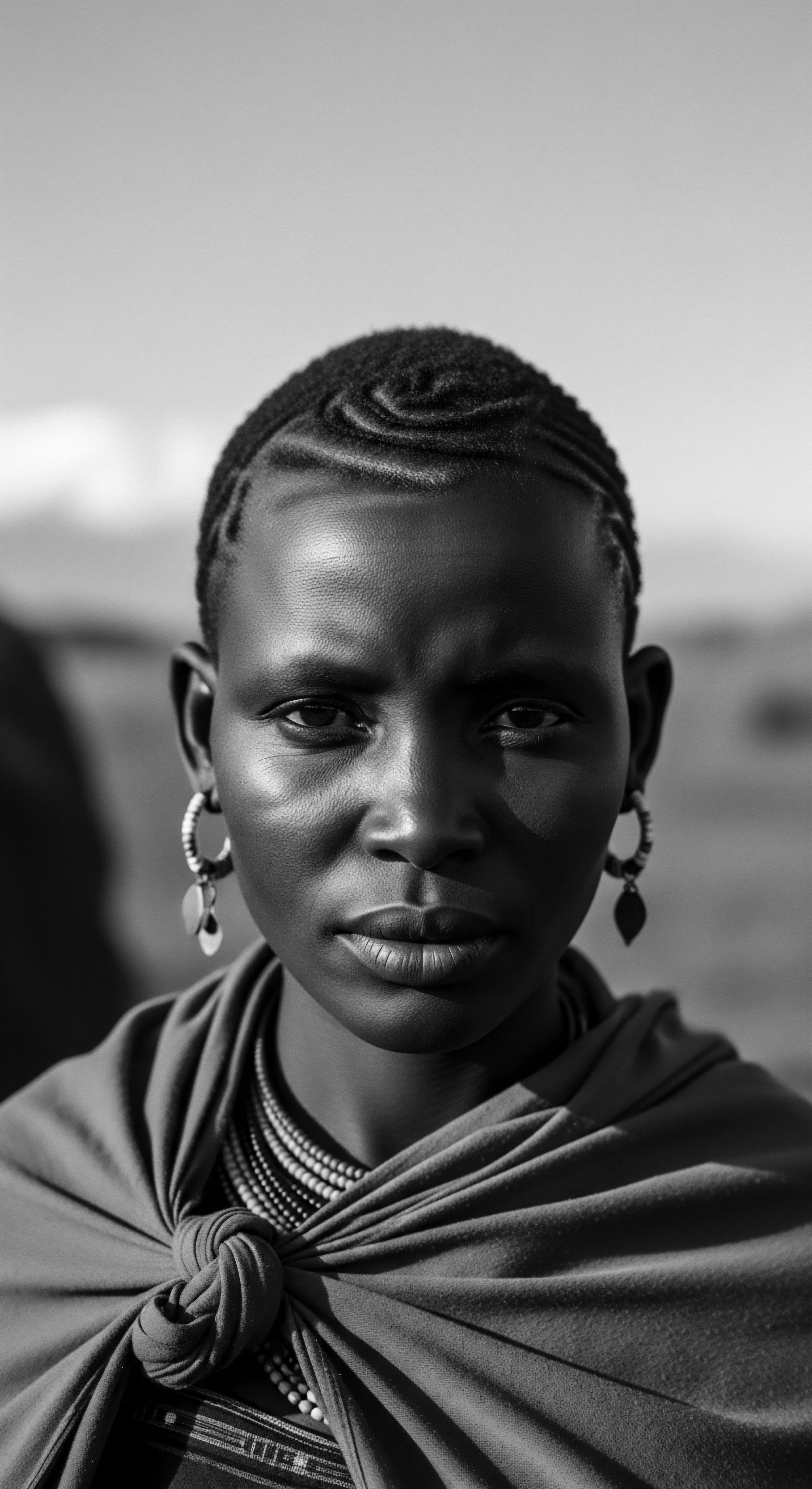
Reflection
As we trace the intricate pathways of textured hair through time, from the ancestral lands of Africa to the contemporary landscape of global identity, we begin to feel the living breath of a legacy. This exploration of how traditional hairstyles reflected African heritage is not a static archival exercise; it is a profound meditation on the very soul of a strand, a recognition that within each coil and kink lies a story of survival, creativity, and boundless spirit. Hair, in its myriad forms, has been a quiet witness to history, a canvas for expression, and a resilient banner of cultural memory.
The traditional practices, passed down through generations, were more than styling techniques; they were acts of reverence, community building, and silent communication. They were steeped in a deep understanding of natural elements and the unique biology of textured hair, long before scientific nomenclature existed. This ancestral wisdom, woven into daily rituals and ceremonial occasions, allowed for the maintenance of hair not just as a physical attribute but as a sacred extension of self and collective identity. The legacy of these practices continues to reverberate, guiding modern approaches to care and inspiring renewed appreciation for the inherent beauty and strength of textured hair.
In honoring these traditions, we do more than simply look back; we draw strength from the past to shape a future where every strand is celebrated, every texture seen as a testament to enduring heritage. The journey of African hair is a testament to unwavering human spirit, a luminous narrative written in twists, braids, and natural crowns, forever reminding us of the profound connections between our inner selves, our communities, and the rich ancestral threads that bind us.
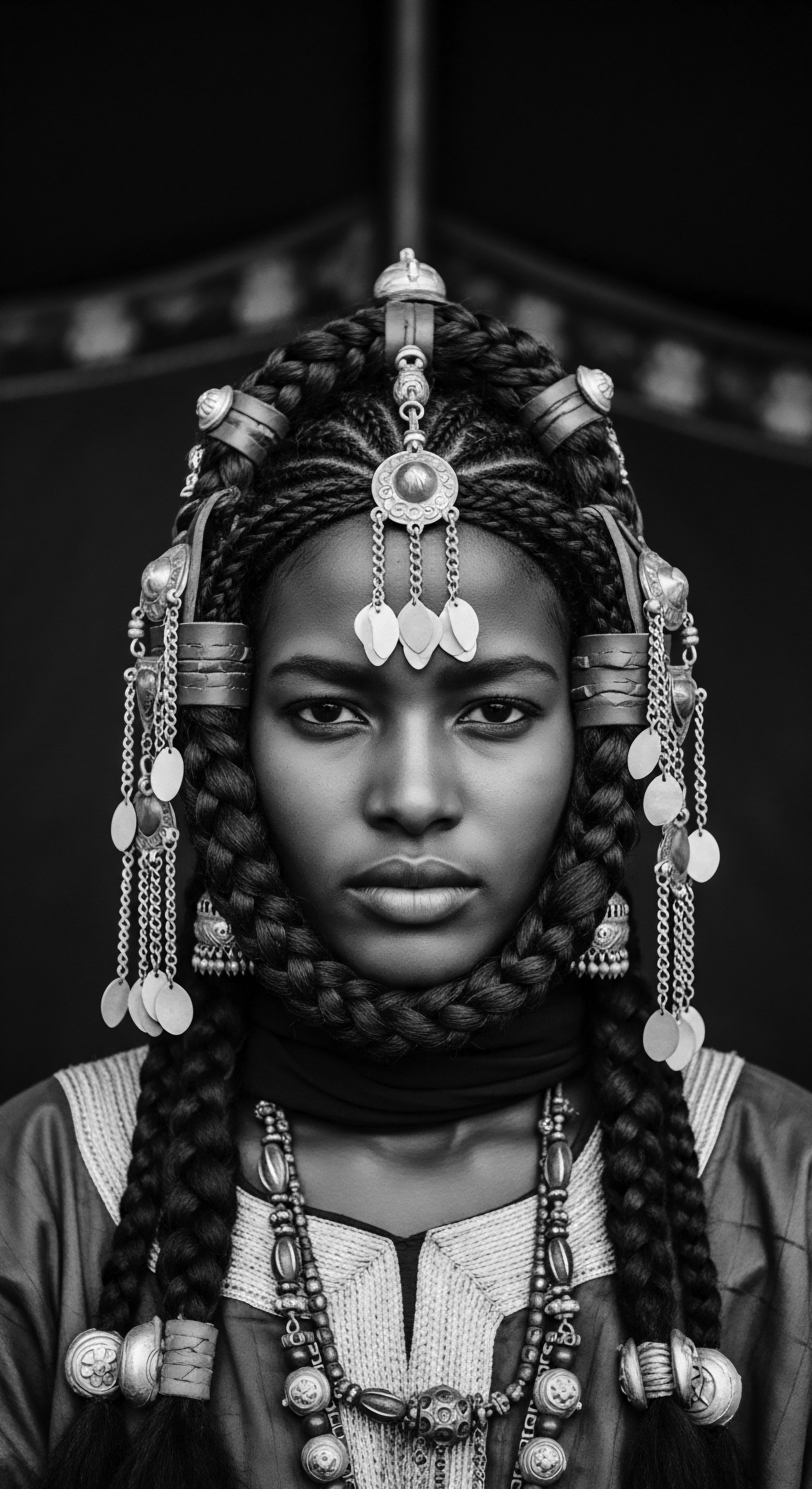
References
- Byrd, Ayana D. and Lori L. Tharps. Hair Story ❉ Untangling the Roots of Black Hair in America. St. Martin’s Press, 2001.
- Sherrow, Victoria. Encyclopedia of Hair ❉ A Cultural History. Greenwood Publishing Group, 2006.
- Banks, Ingrid. Hair Matters ❉ Beauty, Power, and Black Women’s Consciousness. New York University Press, 2000.
- Jacobs-Huey, Lanita. From the Kitchen to the Salon ❉ Language and Cultural Co-Construction in the African American Hair Care Industry. Indiana University Press, 2006.
- Rooks, Noliwe M. Hair Raising ❉ Beauty, Culture, and African American Women. Rutgers University Press, 1996.
- Patton, Tracey. African American Hair Story ❉ Past, Present, and Future. Lexington Books, 2006.
- Caldwell, Paulette M. A Hair Piece ❉ Perspectives on the Legal and Social Implications of Hair. Harvard Civil Rights-Civil Liberties Law Review, 1991.
